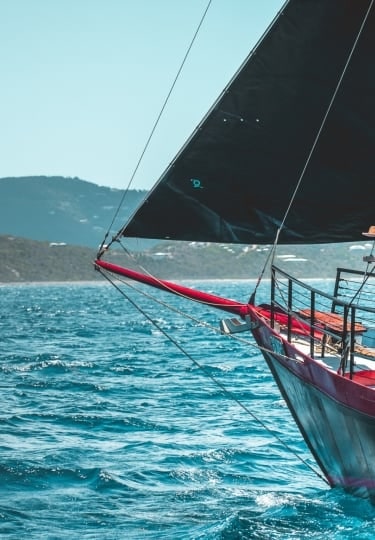Hidden gems in the Caribbean are not just the stuff of legends; they are real and waiting for any visitor to discover. These treasures range from secret beaches to historic mansions, tiny uninhabited islands, and beautiful tropical gardens.
Best of all, you don’t need to embark on a complex quest to find these enchanting spots. Dive into the details below to explore some of the most captivating and lesser-known attractions in the Caribbean.
Hibiscus Eco-Village, Dominica
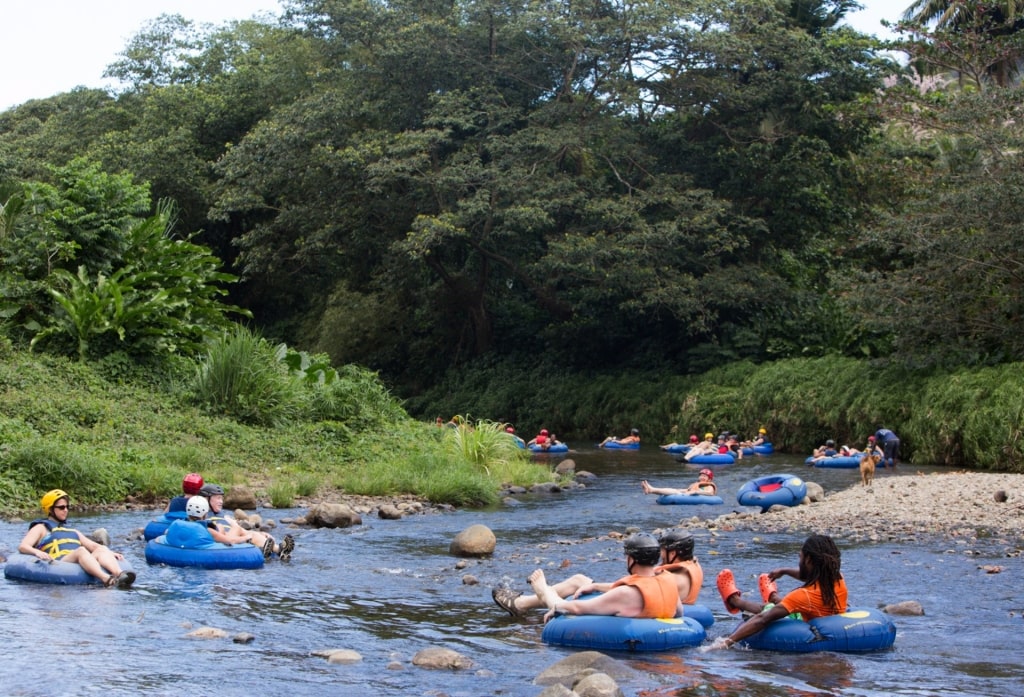
River tubing in Dominica
A visit to this charming village allows you to explore the Kalinago heritage of Dominica. Canoe or raft building and cassava bread-making were among the skills used by these people long before the arrival of the Spanish.
You can hike, taking in sea views while exploring the rainforest, to find out why Dominica is known as “The Nature Island”. A local guide can point out the many medicinal and culinary uses of some local herbs or other plants.
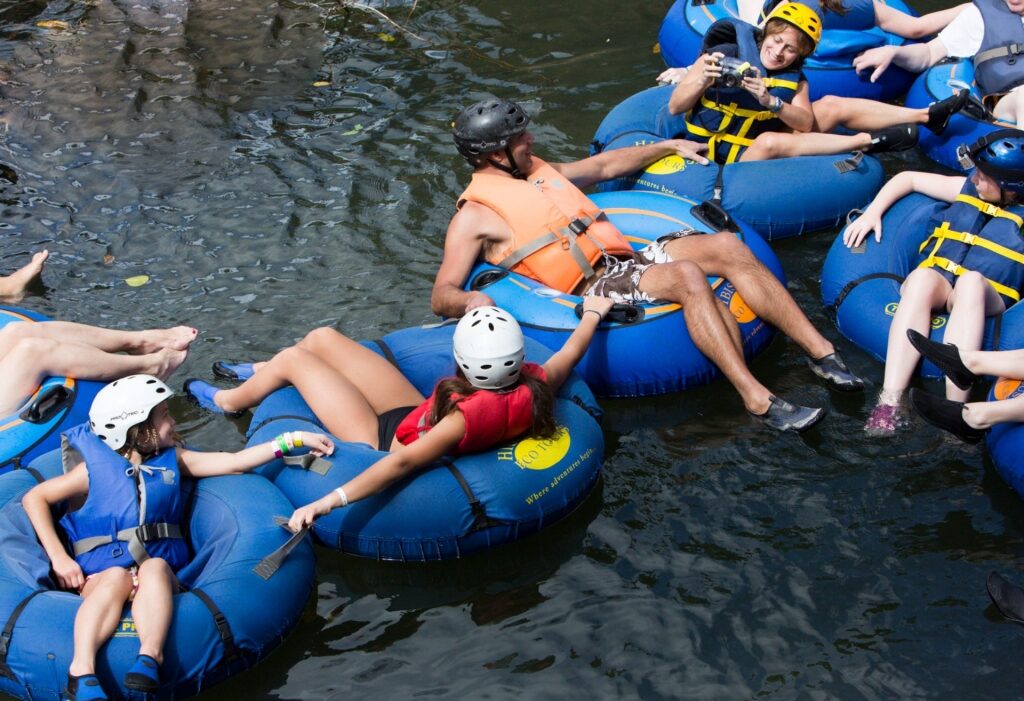
River tubing in Dominica
Finish with a cooling dip in the river near a beautiful hidden waterfall. If water levels allow, you can also take a tube ride down some gentle mini rapids.
The village is on a clifftop pounded by Atlantic waves. In the village itself you can enjoy tasting typical Kalinago cuisine or discovering their art and crafts.
Read: Best Things to Do in Dominica
Klein Bonaire, Bonaire
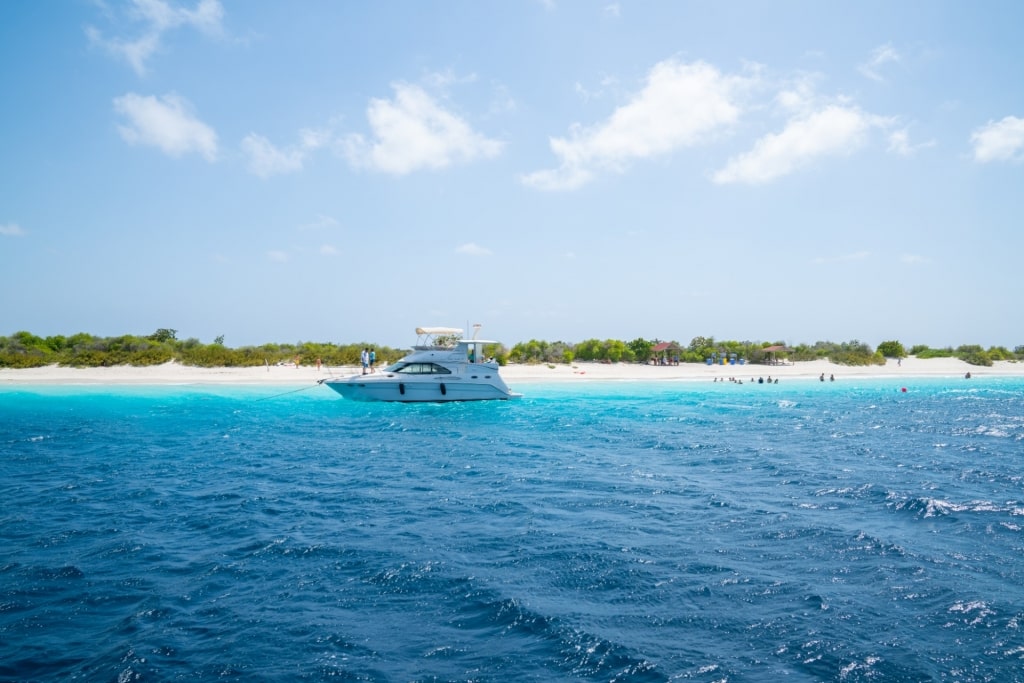
Klein Bonaire, Bonaire
This small, uninhabited island is a haven of clear waters, coral reefs, and thriving marine life. About half a mile off the western coast of Bonaire, it’s reached by a short boat ride from the main island.
Klein (“Small”) Bonaire is just over two square miles in size. That makes it perfect for a day of exploration, either along its beaches, its reefs or its interior.
The island is mostly flat, with low-lying vegetation, so it’s hard to get lost. Still, most visitors stick to the sandy beaches, several of which are nesting sites for green and hawksbill turtles.

Bonaire National Marine Park
This is also home to some of the best snorkeling and diving in Bonaire. The island’s coral reefs are part of the Bonaire National Marine Park, well known for its strong conservation program.
Landhuis Chobolobo, Curaçao

Landhuis Chobolobo, Curaçao
This historic plantation house in Willemstad, Curaçao’s capital, dates back to the 19th century. Originally the heart of a citrus fruit plantation, it’s better known as the home of “Blue Curaçao” liqueur.
Taking a distillery tour is one of the best things to do in Curaçao to learn about the process, and pick up some cocktail recipes. You’ll doubtless also return with a bottle of the blue, orange, coffee, or rum raisin flavors.

Landhuis Chobolobo, Curaçao
Sweet Valencia oranges were introduced to the island by Spanish settlers in the early 1500s. The harsh local environment could not support them, but the bitter Laraha orange hybrid now used for Curaçao lacquer eventually evolved over the centuries.
The Landhuis itself is a beautiful building, with much history amid its architecture, and furnishings. The shady gardens are also a delight, and very popular with photographers.
Tobago Historical Museum, Tobago
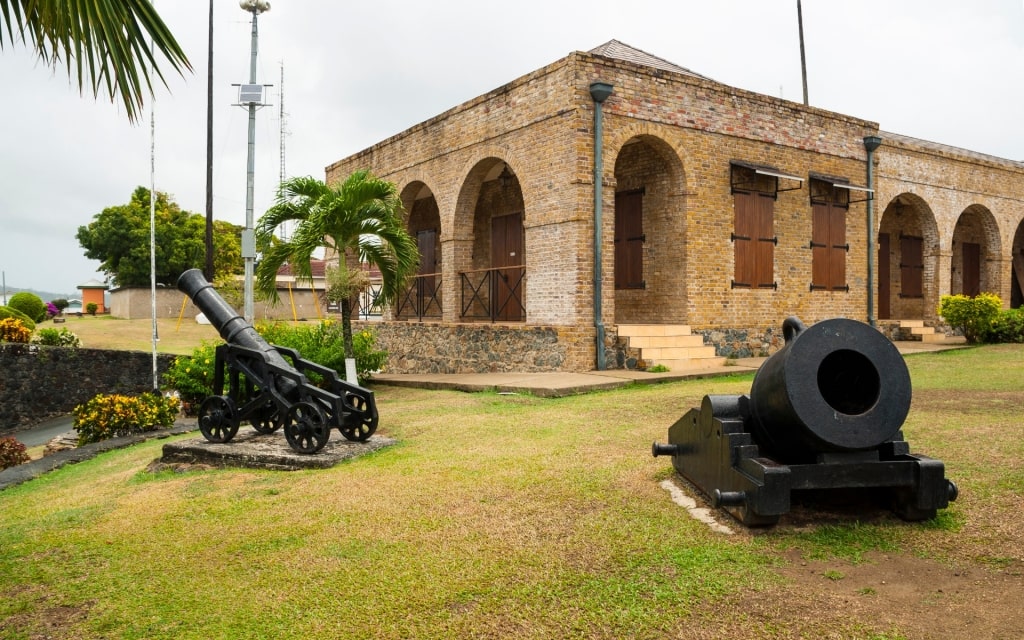
Tobago Historical Museum, Tobago
The island of Tobago is itself a bit of a hidden gem, somewhat overshadowed by its sister island of Trinidad.
However, if you can tear yourself away for a few hours from the island’s many tropical charms, visiting this Historical Museum is one of the best things to do in Tobago.
You’ll find it in the former Officer’s Barracks of Fort King George. This strategic strongpoint was built by the British around 1777 and has amazing views over the Tobago harbor as well as the surrounding sea.
Those three centuries of history, and more, are brought to life in the museum with Amerindian artifacts, militaria, and other artifacts. More detail is offered in documents, paintings, and historic maps.
The island’s history of colonization, slavery, emancipation, and independence are all covered. Afterwards, the views and the beautiful tree-shaded grounds add to the rich experience.
Grand Etang National Park, Grenada
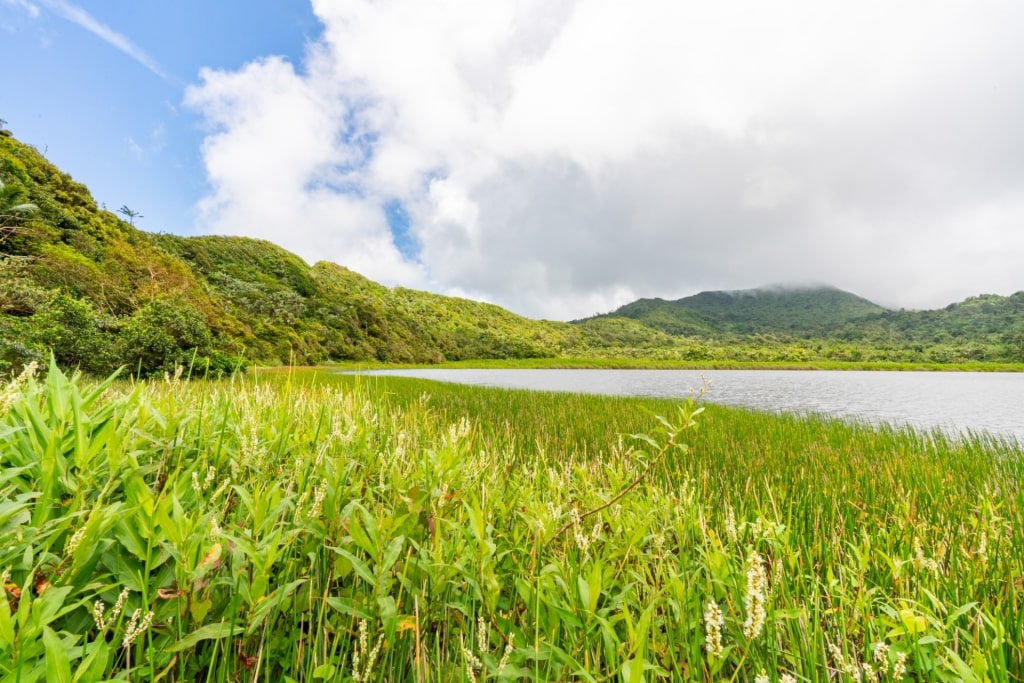
Grand Etang National Park, Grenada
Away from its lovely beaches, you’ll find the Grand Etang National Park in the heart of Grenada. This beautiful natural reserve is a place to find rainforest, mountains, and a lake. It’s one of the loveliest hidden gems in the Caribbean.
Only six miles from the capital, St. George’s, the park’s focal center is Grand Etang Lake. This is a crater lake formed by a now-extinct volcano.
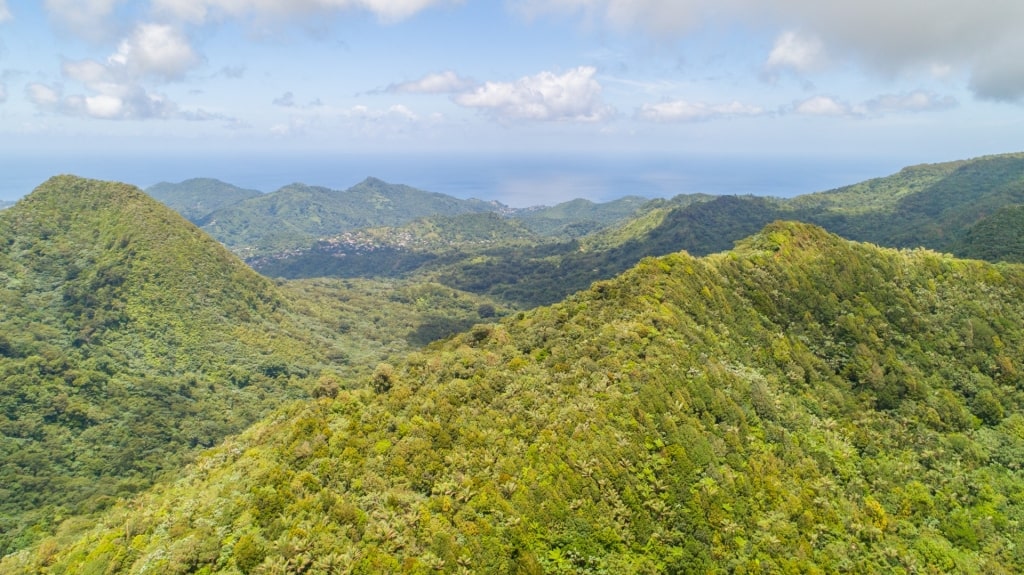
Grand Etang National Park, Grenada
Visiting here is one of the best things to do in Grenada. You’ll find hiking trails of various lengths in the park. Many will bring you to the amazing view of the blue lake surrounded by rich green vegetation.
A guide—or information from the visitor center—will help you in identifying some of the island’s unique flora and fauna. These include towering mahogany trees, and species such as the national bird, the Grenada dove.
Botanical Gardens, Nevis
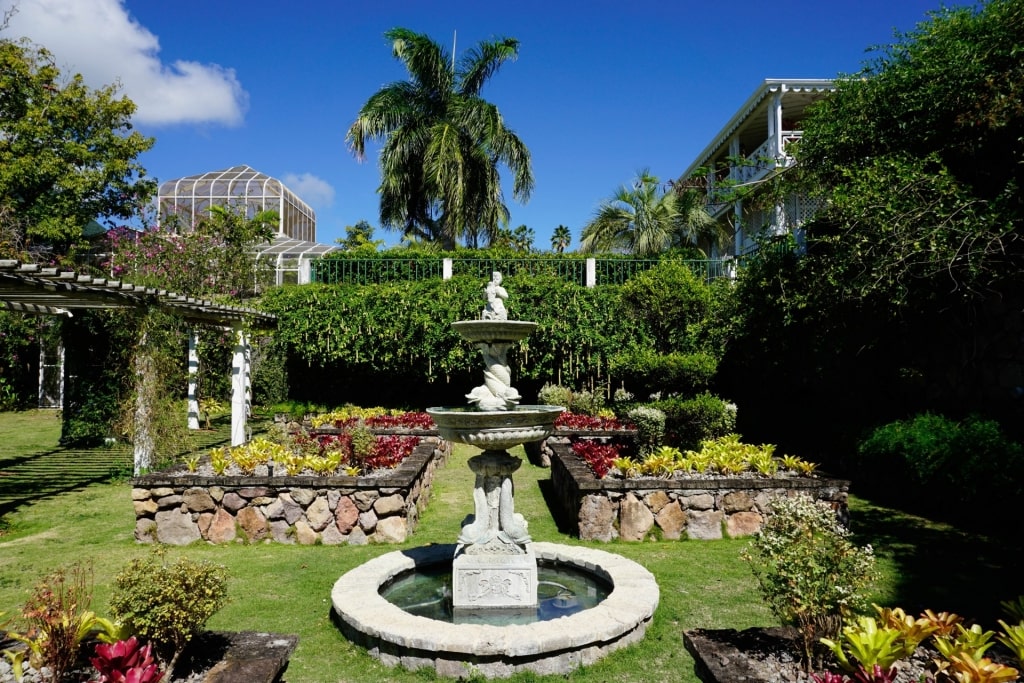
Botanical Gardens, Nevis
Nevis has a number of distinctive private gardens, which bloom vividly thanks to the rich volcanic soil. Many of these island gardeners find inspiration in the imaginative Botanical Gardens of Nevis.
You’ll find them on the historic Montpelier Estate, a former slave-holding sugar plantation. This is also where Captain Horatio Nelson married Frances Nisbet, the owner’s niece, in 1787.
The gardens were established in the early 1990s by the owners of what is now the beautiful Montpelier Plantation Inn. Covering some seven acres, they include a Palm Avenue, Rainforest Conservatory, water features, and more than 100 species of orchids.
As you walk around, you will come upon many whimsical sculptures and statues. These include a giant Buddha, African animals, and a miniature Stonehenge.
Read: Things to Do in St. Kitts & Nevis
Caye Caulker, Belize
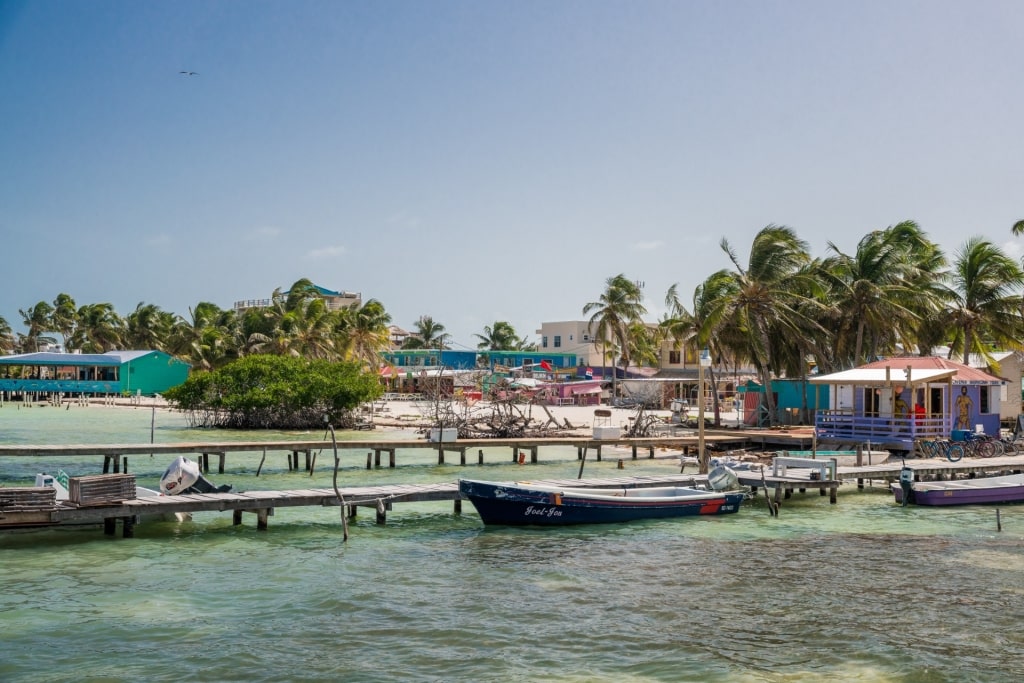
Caye Caulker, Belize
If you are searching for the perfect tropical island, Caye Caulker off the coast of Belize is a good candidate. This small coral island is split in two by a channel that adds considerably to its appeal.
“The Split” forms a crystal-clear, river-like setting, its banks lined with laid-back bars, and relaxed beach life. Sandy streets meander away through colorful shacks and wooden houses.
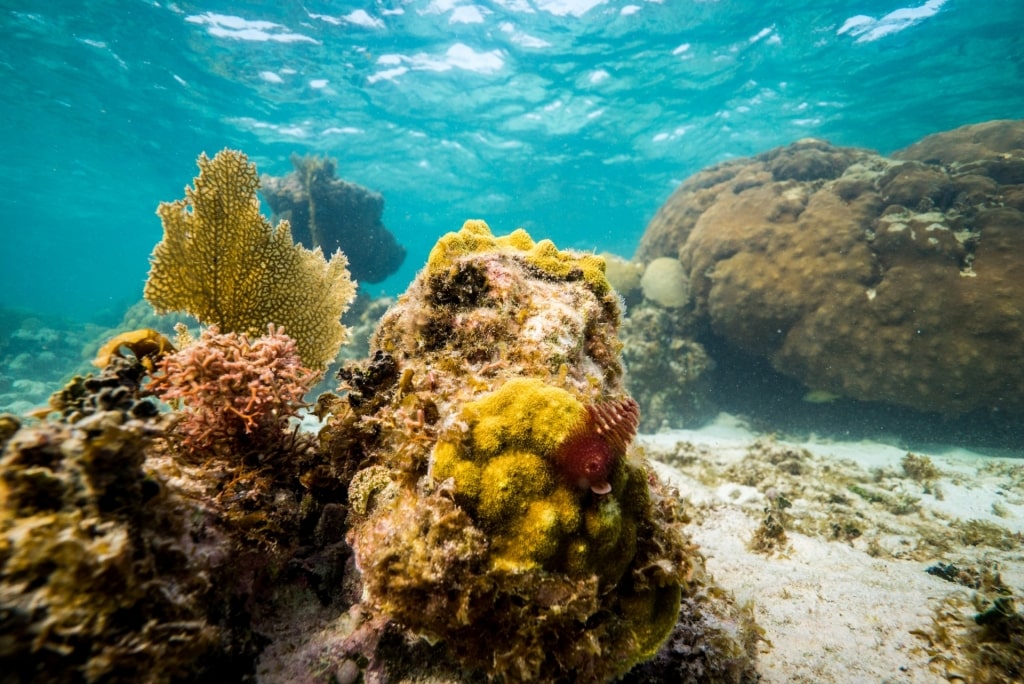
Belize Barrier Reef
Caye Caulker is part of the Belize Barrier Reef Reserve System, a UNESCOO World Heritage Site. You’ll find some of the best diving and snorkeling in Belize within easy reach, amid dazzling coral reefs.
Devil’s Bay National Park, Virgin Gorda, BVI
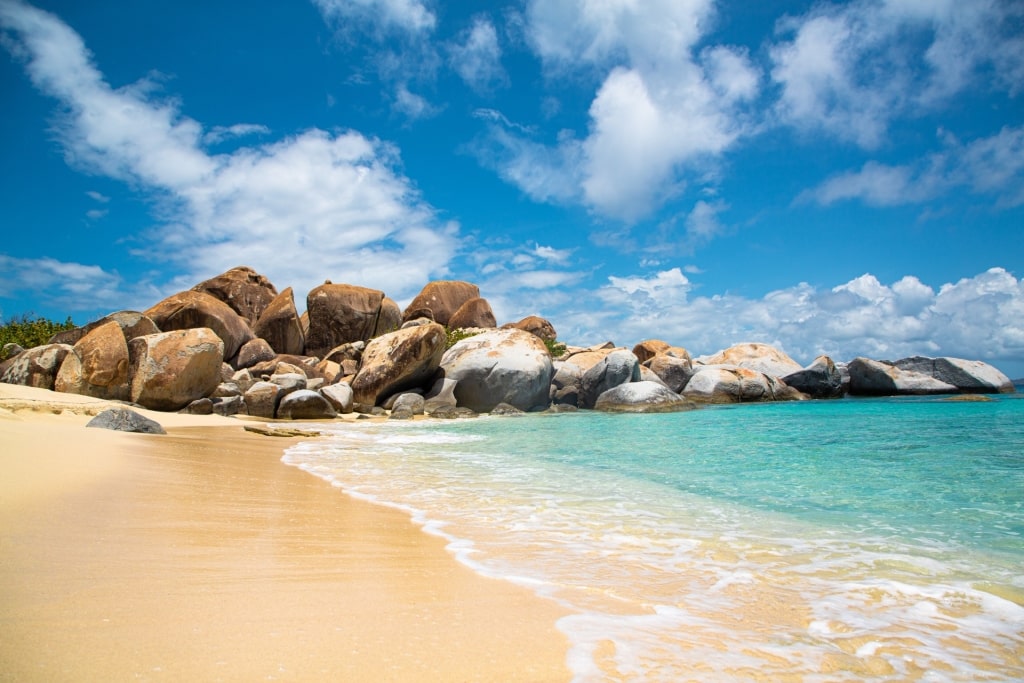
Devil’s Bay National Park in Virgin Gorda, British Virgin Islands
Devil’s Bay National Park is on the southwestern tip of Virgin Gorda, one of the larger of the British Virgin Islands. It’s renowned for its spectacular setting of soft, sandy beaches, crystal-clear waters, and unique geological formations.
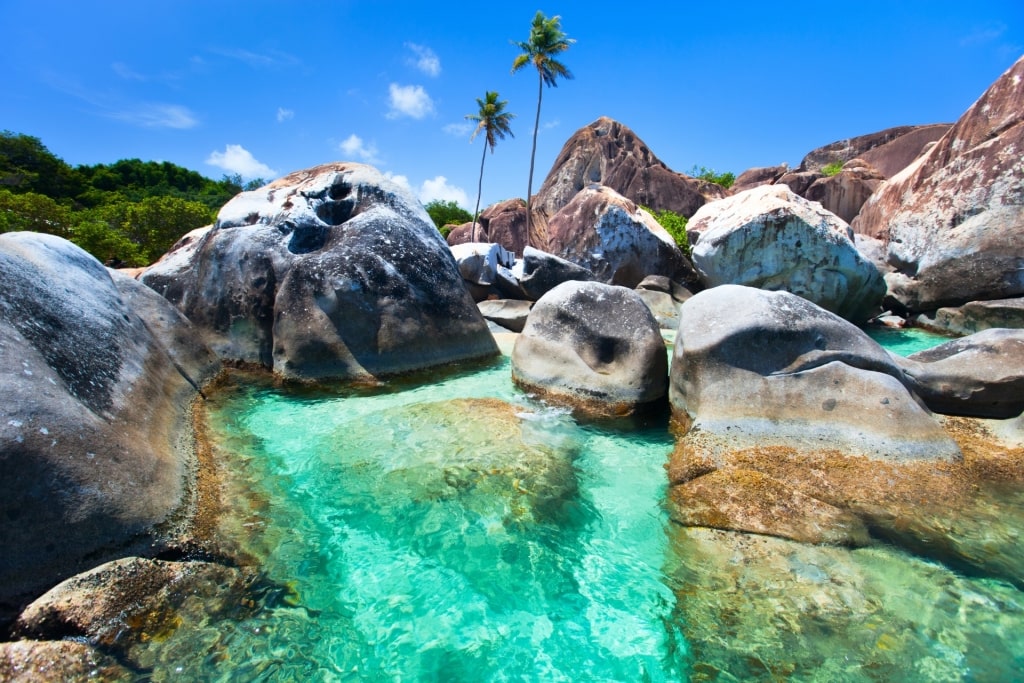
The Baths of Virgin Gorda, British Virgin Islands
The most famous of these rocks are The Baths, a set of enormous granite boulders. These tumbled rocks form a maze of tunnels, caves, and pools along the water’s edge that make it one of the best places to swim in the world.
From The Baths, it’s an easy walk or hike along the shore to Devil’s Bay itself. You can also take a boat to land at what is literally called White Sandy Beach.
The beach looks even brighter in contrast to the bright turquoise waters in front and lush green vegetation behind. It’s a perfect setting for strolling, sunbathing, swimming, or snorkeling.
White Bay, Jost Van Dyke, BVI
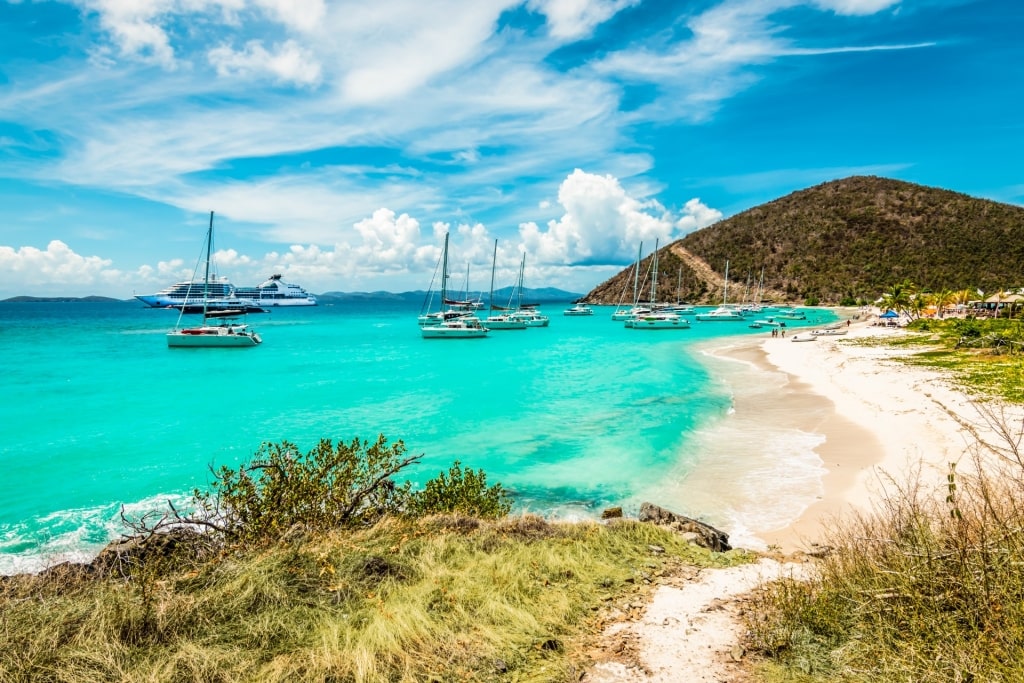
White Bay in Jost Van Dyke, British Virgin Islands
Jost Van Dyke, the smallest of the four main British Virgin Islands, has a population of about 300 people. Only three square miles in area, it’s known for its laid-back atmosphere and beautiful white sand beaches.
The island is a popular stop for boaters and sailors exploring this part of the Caribbean. White Bay is where many of those visitors meet to enjoy its soft sand and clear turquoise waters.
With no dock to moor at, many of those visitors swim ashore. No prizes, then, for guessing why the bar here is called “Soggy Dollar Bar”.
The bar claims to be where the Caribbean cocktail Painkiller was invented. This potent combination of rum and tropical juices, is therefore a must-try drink at White Bay.
Buck Island, St. Thomas, USVI
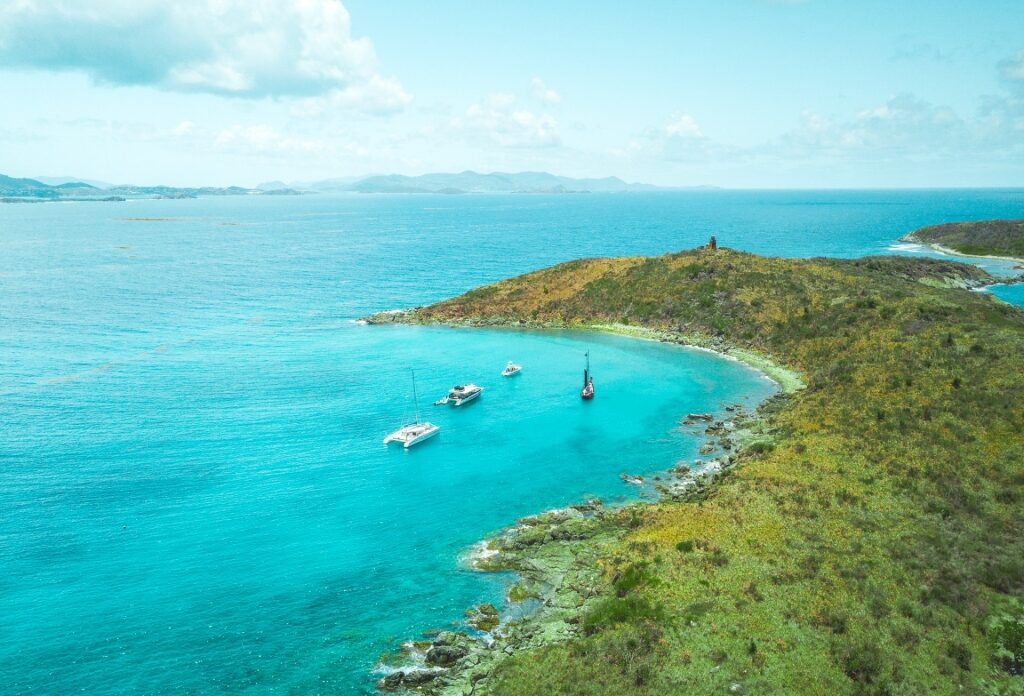
Buck Island, U.S. Virgin Islands
Two miles south of St. Thomas is a tiny slice of paradise called Buck Island. Protected as the Buck Island National Wildlife Refuge, it’s of vital importance to migratory birds.
While visitors are not allowed to land on what is a very arid island, its reefs are open to visitors. Boat excursions bring snorkelers, divers, and swimmers to enjoy the remarkably clear waters and colorful marine life.
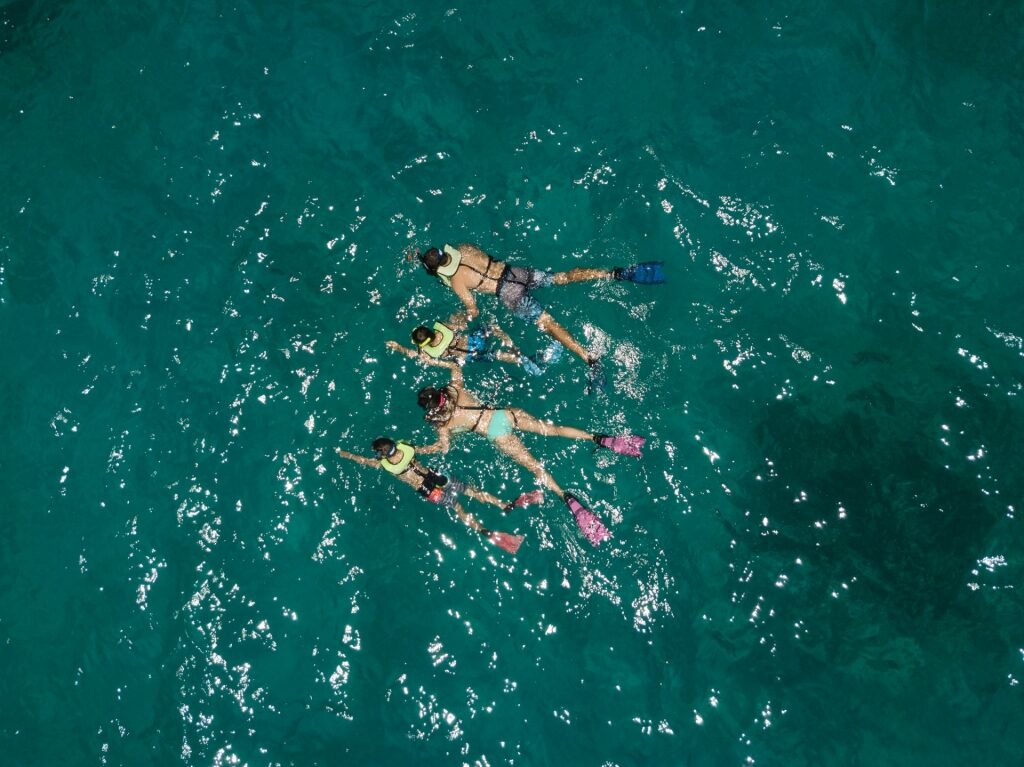
Snorkeling in Buck Island, U.S. Virgin Islands
You may also be able to spot birds such as the brown booby, bridled tern or magnificent frigatebird. The island’s abandoned, Danish-built lighthouse is a photogenic landmark.
Many tours here also include a visit to Honeymoon Beach on Water Island, just off St. Thomas.. This scenic beach is well known for the sea turtles in its clear waters.
Diamond Falls, St. Lucia
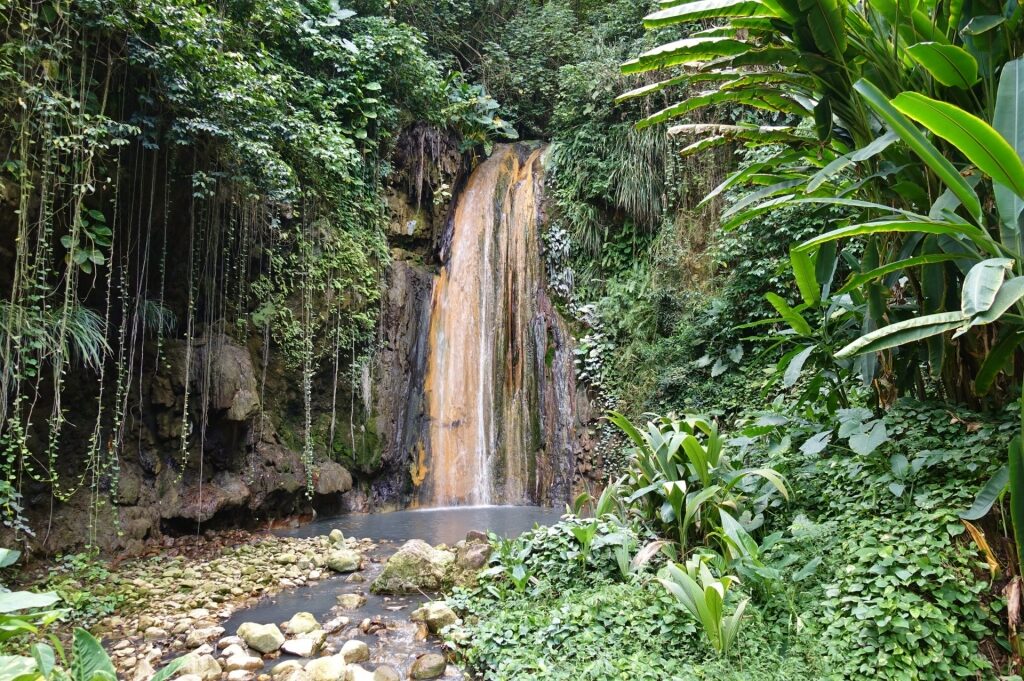
Diamond Falls, St. Lucia
Diamond Falls in St. Lucia is a mineral-rich waterfall where the cascading water has left a rich pattern of colors on the rocks. This kaleidoscope ranges from yellow and green to blue and purple.
The falls are in the Soufrière region, which is well known for its geothermal activity. An unmissable thing to do in St. Lucia is to visit the nearby Sulphur Springs, where you can experience the rejuvenating effects of a mud or mineral bath.
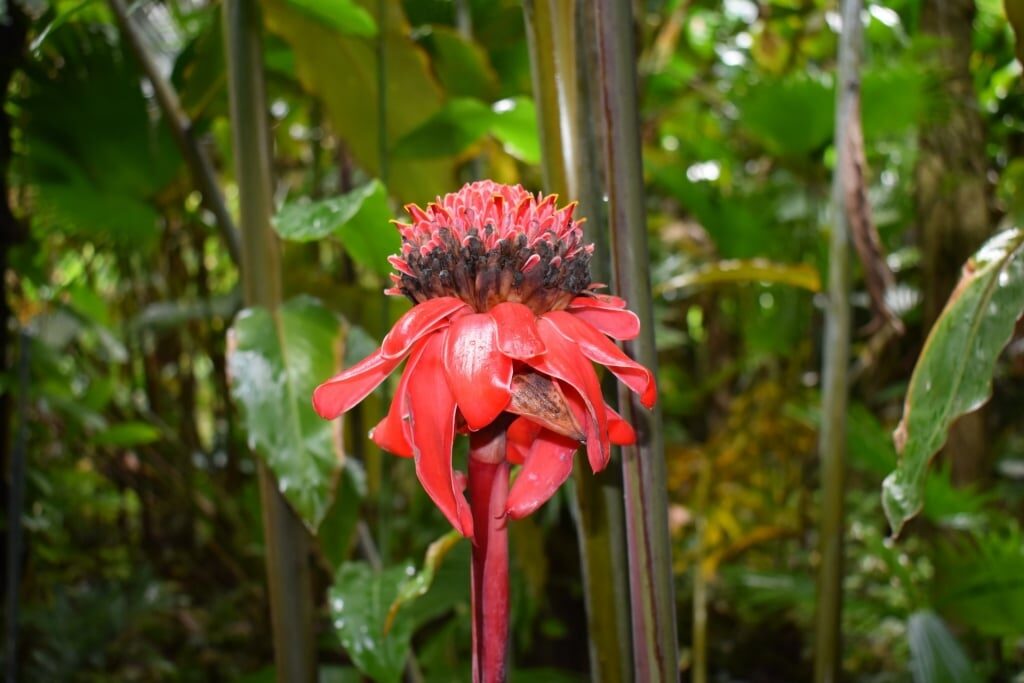
Diamond Falls Botanical Gardens, St. Lucia
The Diamond Falls Botanical Gardens also benefit from the heat and humidity. Established in the 18th century, they have a diverse collection of tropical plants, flowers, and exotic vegetation.
Follow one of the nature trails through the gardens to see the rich tropical flora and many native bird species. A highlight for many visitors is capturing a photo of the colorful hummingbirds.
The Donkey Sanctuary, Antigua
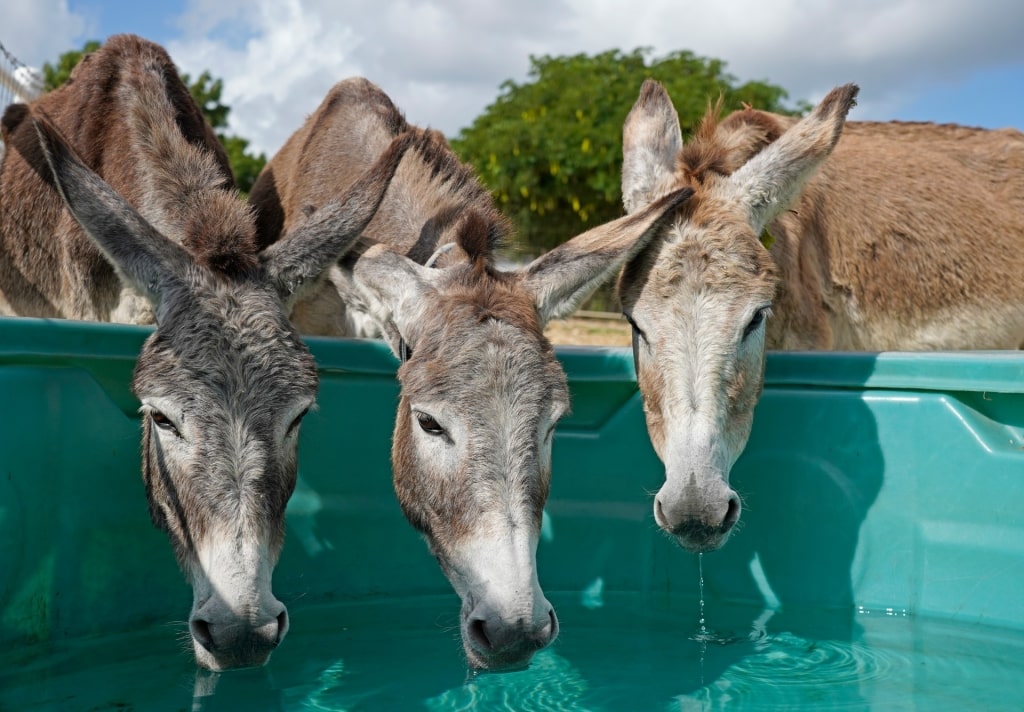
The Donkey Sanctuary, Antigua
Donkeys were once an important part of agricultural life on many Caribbean islands. On Antigua, they were also a mainstay of the sugar industry, working in fields on sugar mills.
The last sugar factory closed in the 1970s, but many wild donkeys still roam the island. The Donkey Sanctuary aims to care for them, especially those under threat from farmers whose crops the donkeys may damage.
The sanctuary is in Bethesda, on the eastern side of Antigua. It’s open to visitors, with no fee, but a donation is obviously welcome.
You can tour the facility, meet the donkeys and learn about their history, and the sanctuary’s mission. You might even go away having adopted a donkey, whose care you can follow as a souvenir of your island visit.
Read: Best Things to Do in Antigua
Hell, Grand Cayman
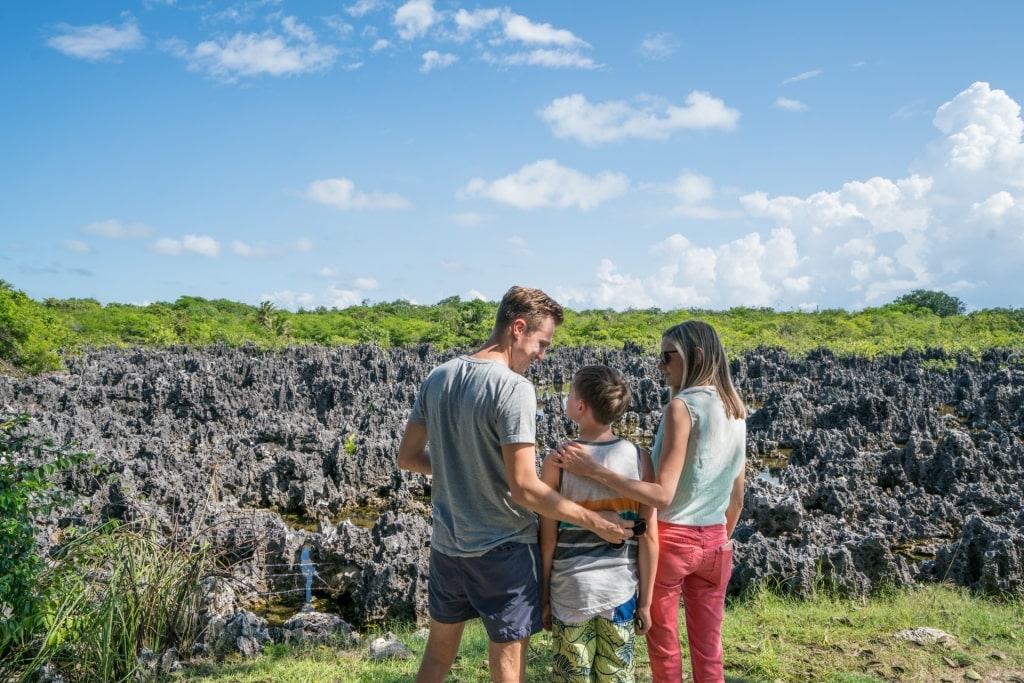
Hell, Grand Cayman
Some rugged, black limestone formations on Grand Cayman have created an otherworldly landscape dubbed “Hell” by islanders. Not far from Seven Mile Beach, Hell is in marked contrast to that idyllic stretch of sun, sea, and sand.
A small Visitor Center helps explain the millions of years of geological activity behind the jagged rocks. More crucially, it allows you to buy souvenirs proving you have been to Hell.
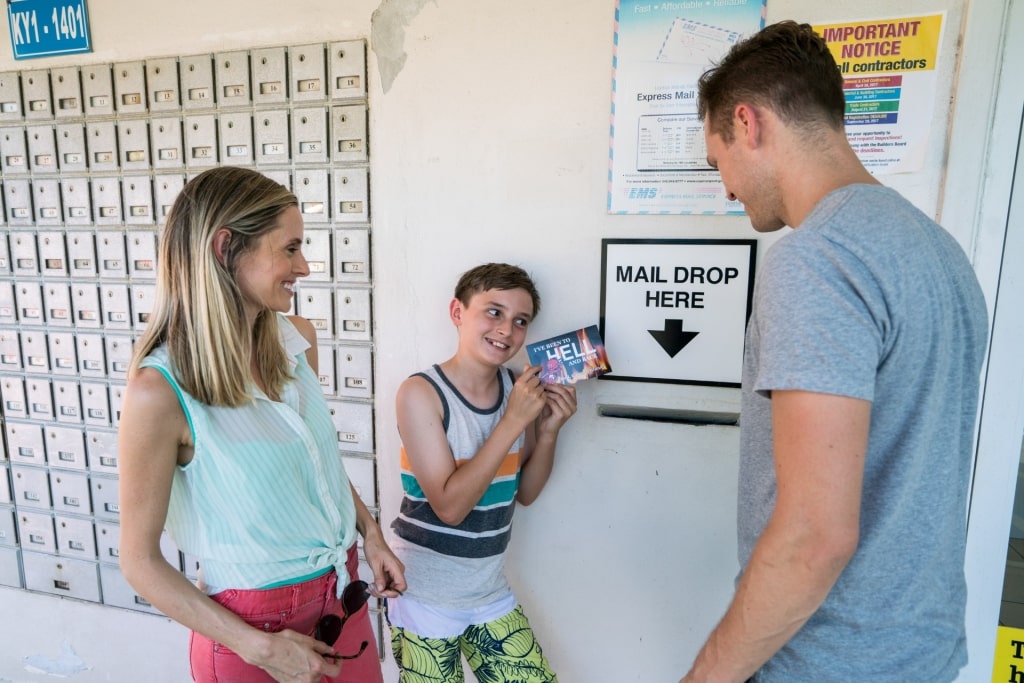
Hell, Grand Cayman
There is also a post office, from where you can post cards with an appropriate postmark that may surprise the recipient of the card. It’s one of the coolest things to do in Grand Cayman.
More seriously, boardwalks and viewing platforms let you walk around without damaging the delicate limestone. Fortunately, any volcanic activity happened millennia ago, so you will not suffer any fires in this particular Hell.
Vieques, Puerto Rico
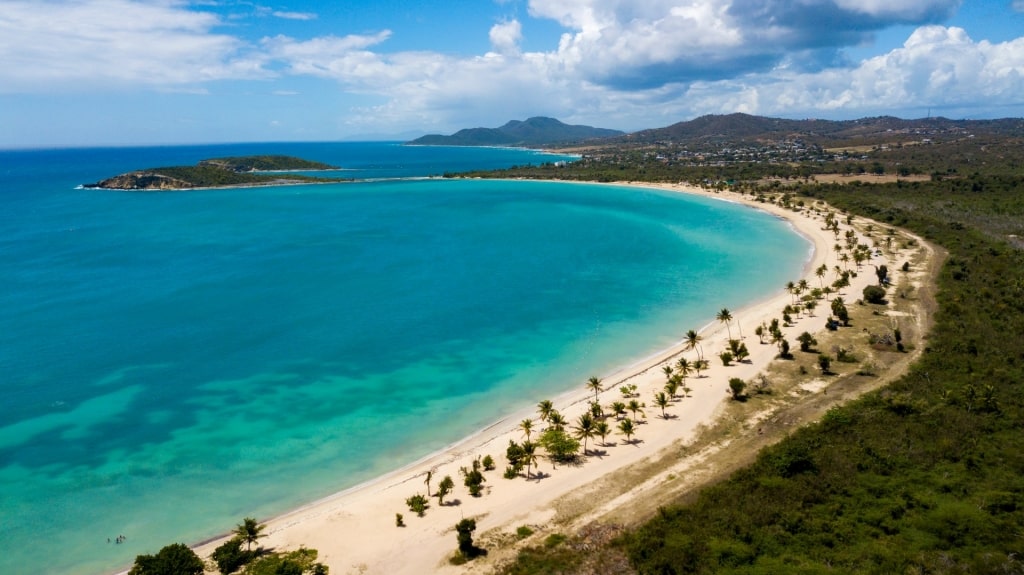
Vieques, Puerto Rico
The small island of Vieques lies about eight miles off the main island of Puerto Rico. Part of the little-known Spanish Virgin Islands, it’s easy to reach by ferry or light aircraft.
The island’s most popular attractions, apart from its laid-back atmosphere, are its bioluminescent bays. Mosquito Bay here is considered one of the brightest in the world.
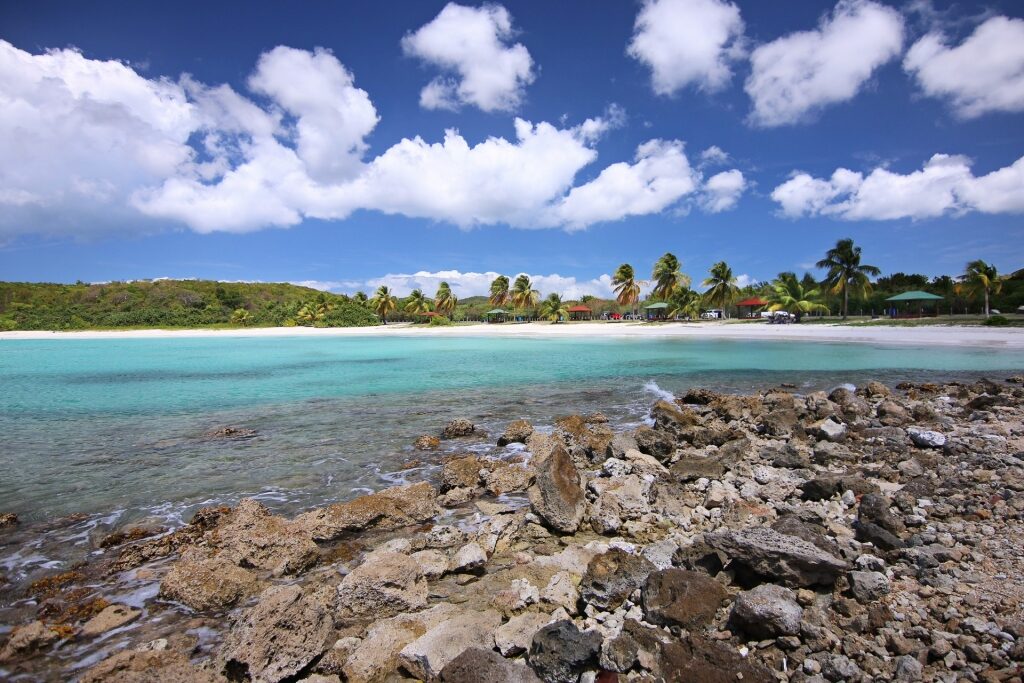
Caracas Beach in Vieques, Puerto Rico
There are a number of other soft, sandy beaches to enjoy, including the evocative Playa Media Luna and Playa Caracas (Red Beach), one of the best places to snorkel in Puerto Rico. You may also see some of the island’s wild horses that roam freely along the beaches and roads.
A large part of the island is designated as the Vieques National Wildlife Refuge. This also protects landscapes that include beaches, wetlands, and forests.
Tres Trapi, Aruba
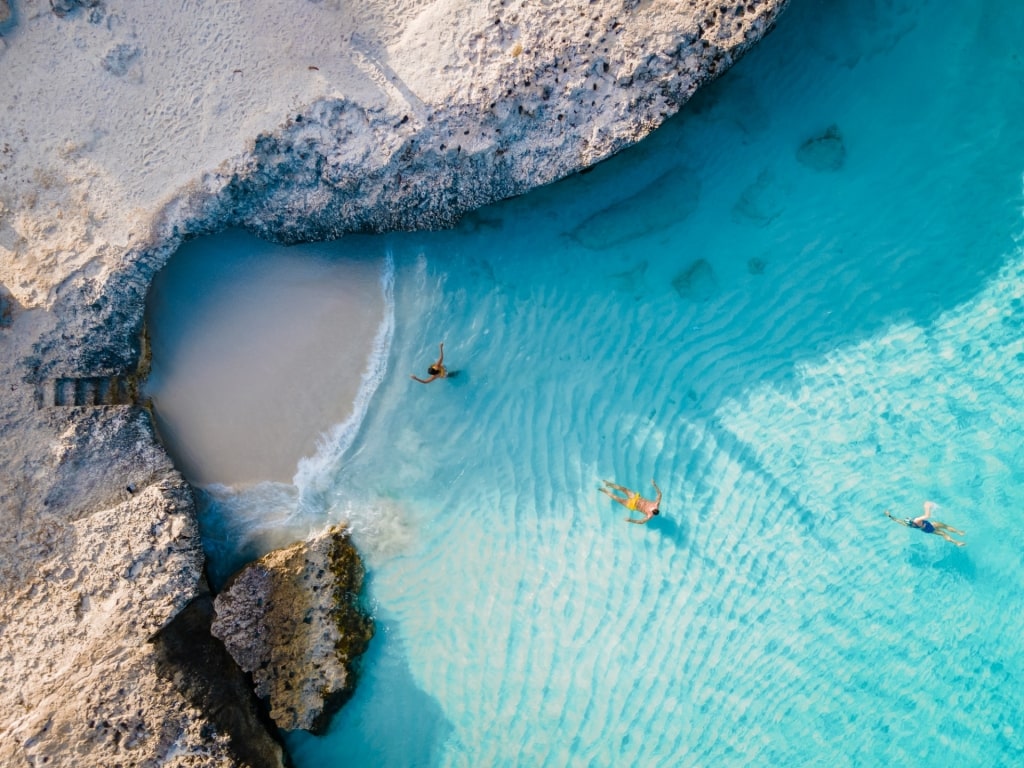
Tres Trapi, Aruba
Tres Trapi Beach on Aruba was named for the three steps cut into the rough coral rock you need to climb down to reach it. Nowadays, there are six steps but the beauty of this tiny bay remains unchanged.
This Aruban beach may be small, but the big attraction here is the snorkeling, so most people dive straight into the water. (For sunbathing, stick to nearby Palm Beach, with its shady trees.)
Once in the sea, you’ll likely spot plenty of sea turtles, which nest here in season. To better see the turtles, swim out to the seagrass forests offshore. There is also a shipwreck, populated with plenty of colorful marine species.
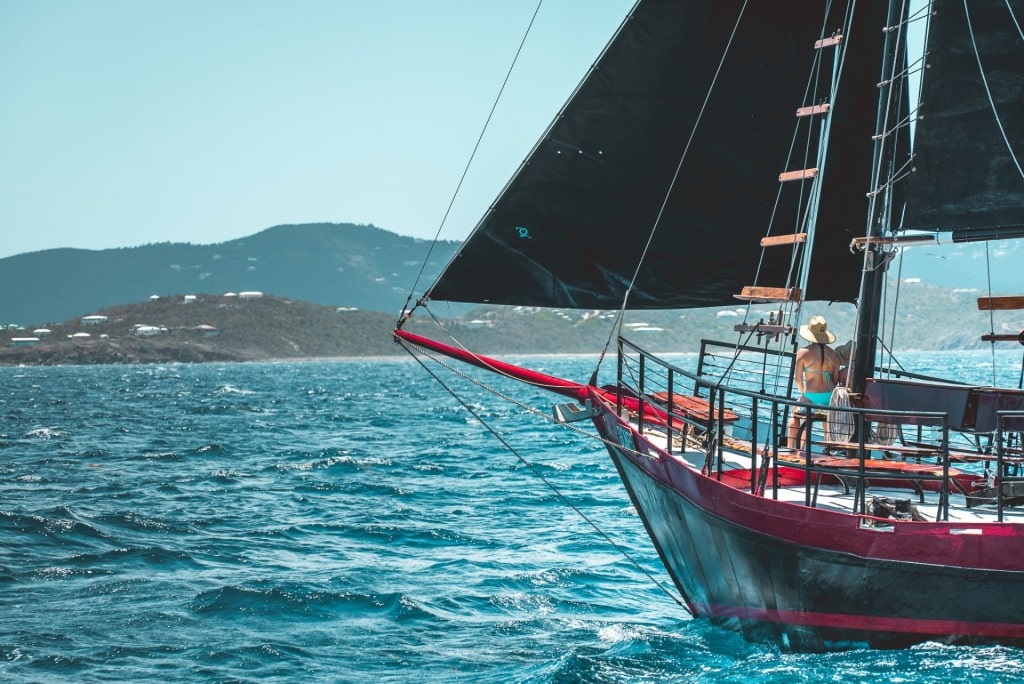
Buck Island, St. Thomas
Has this list of the Caribbean’s hidden gems inspired you to go exploring and seek them out? Browse our Caribbean cruises to plan the perfect tropical getaway.
